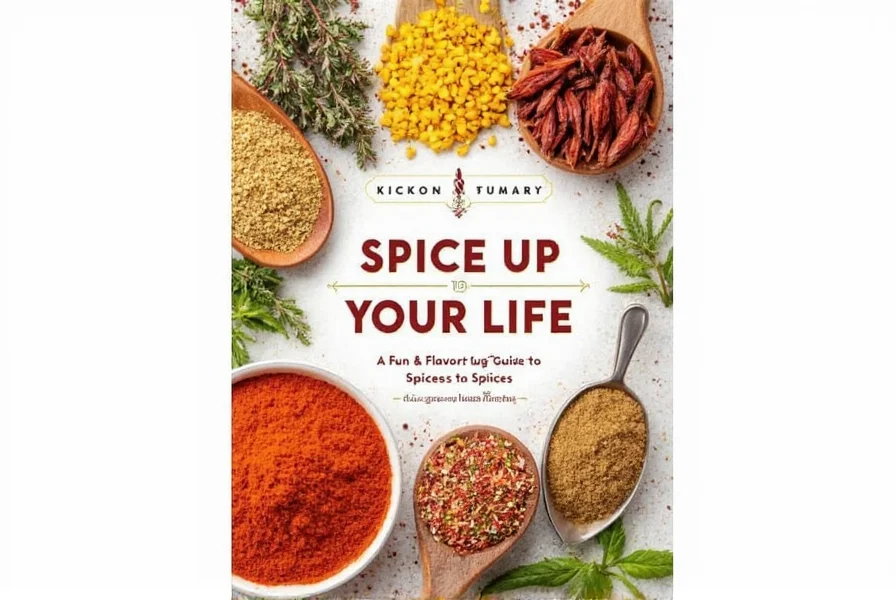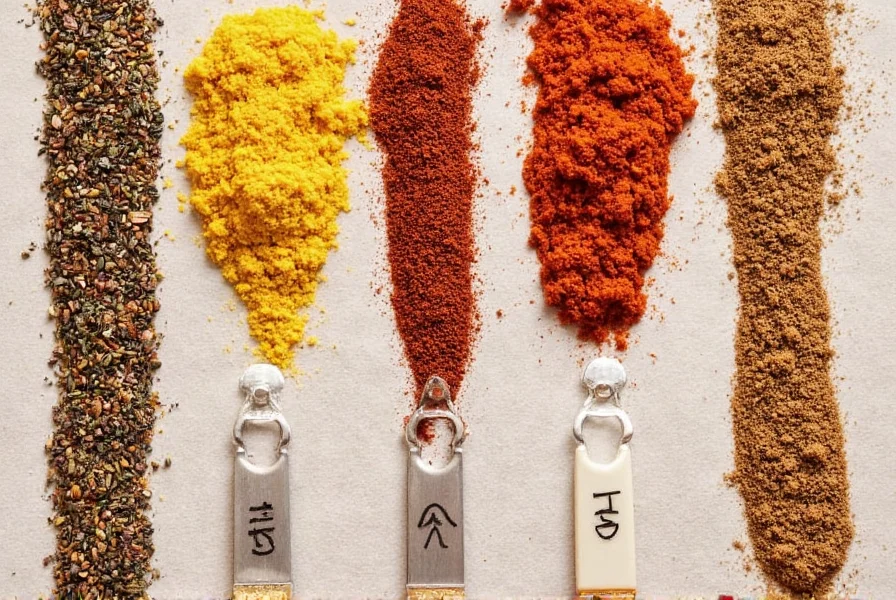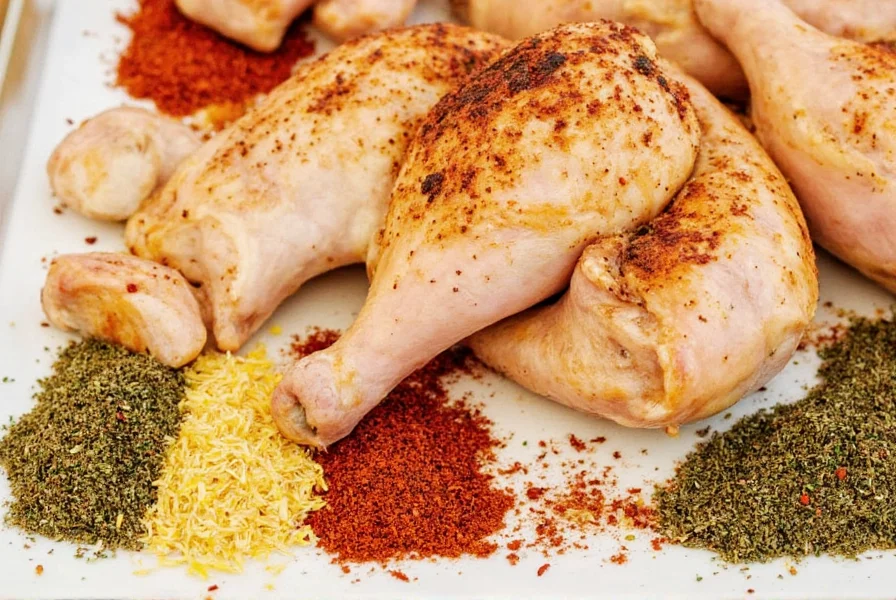Table of Contents
Introduction to Essential Chicken Spices
The top 5 essential chicken spices every cook needs are paprika, garlic powder, thyme, cumin, and black pepper. These form the foundation of countless delicious recipes, as recommended by professional chefs worldwide. Mastering these core spices transforms simple chicken dishes into extraordinary meals with minimal effort.

The Top 5 Essential Chicken Spices
These five spices are universally recognized by culinary experts for their versatility, flavor impact, and ability to complement chicken in any cuisine. Here's why each is indispensable:
- Paprika – Made from ground sweet red peppers, it adds vibrant color and mild smokiness. Smoked paprika elevates barbecue dishes, while sweet paprika enhances roasted chicken. Its neutral heat makes it universally adaptable.
- Garlic Powder – Provides concentrated umami depth without moisture issues. Unlike fresh garlic, it distributes evenly in dry rubs and works perfectly in marinades. A staple in global spice blends for its savory backbone.
- Thyme – Delivers subtle earthy notes with herbal complexity. It withstands high heat during roasting and pairs beautifully with lemon or herbs. Essential for Mediterranean and French-inspired chicken dishes.
- Cumin – Brings warm, earthy depth with a distinctive aroma. Key for Mexican, Indian, and Middle Eastern cuisines. Use whole seeds for toasting or ground for even distribution in curries and chili rubs.
- Black Pepper – Offers balanced pungent heat that enhances other flavors. Freshly ground pepper releases volatile oils for maximum impact. It's the universal seasoning that completes any spice blend without overpowering.

| Combination | Flavor Profile | Best For |
|---|---|---|
| Paprika + Garlic Powder + Black Pepper | Savory, smoky, and balanced | Simple dry rubs for roasted or grilled chicken |
| Cumin + Garlic Powder + Thyme | Egyptian-inspired, warm and aromatic | Moroccan tagines or baked chicken thighs |
| Paprika + Cumin + Black Pepper | Southwestern, robust and spicy | Taco seasoning or fajita marinades |

Professional Tips for Using Chicken Spices
These evidence-based techniques from professional chefs ensure maximum flavor extraction:
- Season early – Apply spices at least 30 minutes before cooking to allow penetration. For best results, refrigerate marinated chicken overnight.
- Toast whole spices – Lightly toast cumin or coriander seeds in a dry pan before grinding to release aromatic oils. This doubles flavor intensity.
- Layer flavors – Add ground spices during cooking for depth, and fresh herbs (like parsley) as a finishing touch for brightness.
- Balance salt carefully – If using salted blends, reduce additional salt. Start with 1/2 teaspoon per pound of chicken and adjust after cooking.
- Store properly – Keep spices in airtight glass containers away from heat and light. Ground spices lose potency after 6 months; whole spices last 2-3 years.

Buying Guide: Selecting Quality Chicken Spices
Professional chefs prioritize these factors when sourcing spices:
- Whole vs. ground – Buy whole spices (like cumin seeds) for freshness. Grind only what you need using a dedicated spice grinder. Pre-ground spices should be purchased in small quantities.
- Origin matters – Hungarian paprika offers superior color and sweetness; Indian cumin has deeper earthiness. Look for country of origin on labels.
- Check freshness – Squeeze spice containers; they should feel light and powdery. Avoid clumped or discolored spices. Smell them – vibrant aroma indicates quality.
- Recommended products – Smith & Son Paprika (Hungarian origin, vibrant red), Spice House Cumin (whole seeds for toasting), McCormick Thyme (certified organic), Badia Garlic Powder (no anti-caking agents), Tellicherry Black Pepper (whole peppercorns for grinding).

Frequently Asked Questions About Chicken Spices
What are the 5 most essential spices for chicken dishes?
According to culinary experts, the 5 essential chicken spices are paprika (for color and smokiness), garlic powder (for umami depth), thyme (for herbaceous notes), cumin (for earthy warmth), and black pepper (for balanced heat). These form a versatile foundation adaptable to any cuisine style from Mediterranean to Tex-Mex. Professional chefs consistently recommend this core set for its universal compatibility and flavor enhancement.
How long do chicken spices maintain their potency?
Whole spices stay fresh for 2-3 years when stored properly in airtight containers away from heat and light. Ground spices lose potency after 6-12 months. Test freshness by crushing a small amount between your fingers – if the aroma is weak or absent, replace them. Professional kitchens replace ground spices every 6 months for optimal flavor.
Should I use fresh or dried herbs when seasoning chicken?
Dried herbs like thyme or oregano are preferred for cooking chicken because they withstand high heat better and release flavor during the cooking process. Use 1/3 the amount of dried herbs compared to fresh. Fresh herbs like parsley or cilantro should be added after cooking as garnish for brightness. Professional chefs use dried herbs for rubs and marinades, and fresh herbs only as finishing touches.
How much spice should I use per pound of chicken?
For dry spice blends, start with 1 teaspoon per pound of chicken. For individual spices, use 1/4 to 1/2 teaspoon per pound. Always taste before cooking and adjust after. Professional chefs emphasize: "Under-season initially; you can always add more but can't remove excess." For wet marinades, reduce salt-based spices to avoid oversalting.
What's the difference between using whole spices versus pre-ground for chicken?
Whole spices retain essential oils longer, providing more vibrant flavor when freshly ground. Pre-ground spices lose potency faster due to oxidation. For best results, toast whole cumin or coriander seeds in a dry pan for 2 minutes before grinding. This releases aromatic compounds that penetrate chicken deeply. Professional chefs recommend grinding whole spices just before use for maximum impact.
Can I create my own custom chicken spice blend at home?
Absolutely. Start with a base of 2 tablespoons paprika, 1 tablespoon garlic powder, 1 tablespoon onion powder, 2 teaspoons dried thyme, 2 teaspoons dried oregano, 1 teaspoon black pepper, and 1 teaspoon salt. Mix thoroughly and store in an airtight container. For Mexican flavors, add 1 teaspoon cumin; for Asian dishes, replace oregano with 1 teaspoon ginger. Professional chefs adjust salt content based on dietary needs and use this method for consistent results.
Conclusion
Mastering these 5 essential chicken spices – paprika, garlic powder, thyme, cumin, and black pepper – unlocks limitless flavor possibilities. Professional chefs worldwide rely on this core set because it's versatile, adaptable, and consistently delivers restaurant-quality results. Start with these fundamentals, experiment with combinations, and transform everyday chicken into extraordinary dishes.










 浙公网安备
33010002000092号
浙公网安备
33010002000092号 浙B2-20120091-4
浙B2-20120091-4